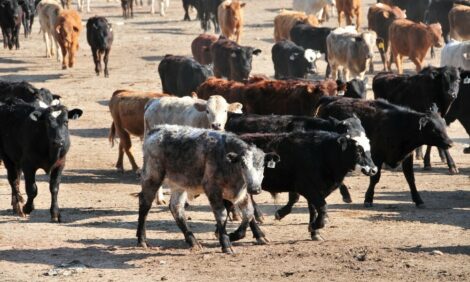



Missouri Hay Listings Add New Forages
US - Cow-herd owners short on hay for winter feed have a new source to shop for forage."The 'Hay Market Listings' on the Internet just expanded to include forages not normally traded," says Joe Horner, University of Missouri Extension economist.
Various forms of corn, soybean and rice forage were added to the traditional list of baled hay offered on the Agricultural Electronic Bulletin Board (AgEBB) of the MU Commercial Agriculture programme.
The new listings are in response to the historic drought that reduced the Missouri hay supply this summer.
Listings added are soybean balage, corn stover, corn silage, corn hay (dry), corn balage and rice hay.
The hay list is a joint effort of MU and the Missouri Department of Agriculture. Farmers can offer for sale or buy hay with no service charge through the MU AgEBB Hay Listings website.
The listings provide detailed descriptions of the forages. That includes bale type (round or square), number of bales, weight of each, and nutrient and nitrate test results, if available.
"Missouri is short a million tons of hay for this winter," Mr Horner says. "Dairy and beef producers are desperate to find feed or they will have to sell herds."
The listings allow livestock producers to find sources of forage. The buyer and seller finish their deals by telephone.
The offerings can be sorted by the source region of the state or nation. "We will be moving a lot of unconventional forages," Mr Horner says. "It will help if we can cut down the distances to be hauled."
Regardless of how bales are priced, it is necessary to compare on the basis of dollars per ton of dry matter, he says. On the MU dairy "Feeds and Nutrition" Web page, Mr Horner posted a calculator that allows producers to put in weight per bale and moisture content to determine cost per ton of dry matter.
"It's a very simple formula you can do on a pocket calculator. This makes it easier," Mr Horner says. "Buyers haggle over the price down the last dime and then lose out by paying for water instead of dry matter."
An advantage of the Hay Market Listings is openness of pricing, Mr Horner says. "By checking the list and comparison shopping you can get an idea of a fair price for the forage you need. Already, I've seen what looks like price gouging in some places."
Hay sellers from other states can list their forage for sale, he says.
Mr Horner adds a word of caution about buying bales from the far south, beyond mid-Arkansas. In the past, fire ants have been imported in some hay bales. Now southern hay must carry an approval certificate from USDA APHIS.
With the wide variety of forage quality this year, all should be tested for nutrient and nitrate contents before feeding, Horner advises cattle owners.
The hay listings are at agebb.missouri.edu/haylst.
The dairy feeds website is at agebb.missouri.edu/dairy/feed



